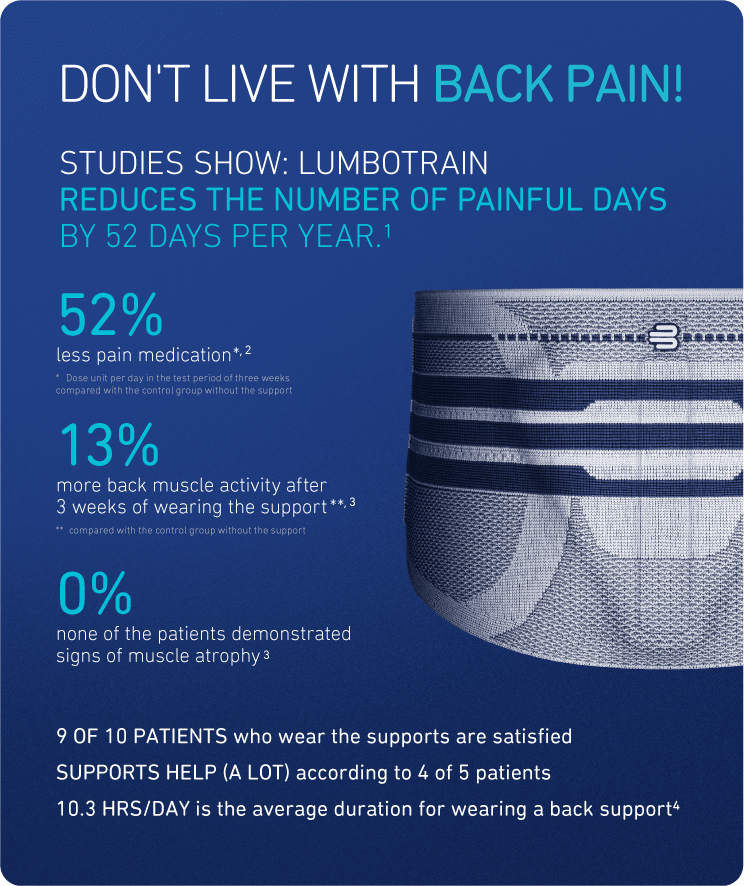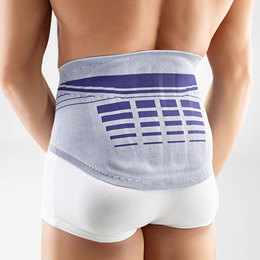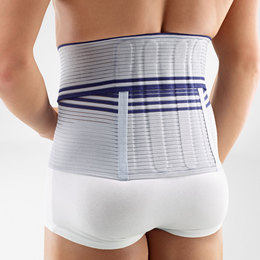Seven gentle strength and stretching yoga poses to mobilize, stretch and strengthen your back.
Bauerfeind back braces relieve back pain from stress by massaging tense muscles and providing stabilization from their circular knit for an improved posture. Relaxation techniques reduce stress and help with lasting back pain relief and a healthy back. Read more about three common techniques for stress relief.


Relaxation techniques to reduce stress
There are many ways people can deal with and limit stress in everyday life, such as maintaining a healthy diet, engaging in regular exercise or practicing relaxation techniques. Yoga, Jacobson’s relaxation and autogenic training are three excellent relaxation techniques for stress relief.
Yoga
In addition to the physical benefits associated with yoga, many techniques have been shown to reduce stress by promoting the release of mood-enhancing endorphins. For example, in a study published in 2016 by the National Library of Medicine, yoga was as effective at limiting disability from lower back pain as other treatments not involving medicine. It was also shown to have a positive effect on depression and other psychological conditions.

Jacobson’s relaxation
Jacobson’s relaxation, also known as progressive relaxation, is a technique that involves a sequence of tightening and relaxing specific muscle groups, one by one, from the feet to the head. It’s considered a relaxation method that can reduce anxiety based on the belief that relaxing the body will also relax the mind.

Autogenic training
Autogenic training is a technique that promotes feelings of calmness and relaxation in your body to help reduce stress and anxiety. It involves getting settled in a comfortable position for breathing exercises and eventually targeting physical expression of stress throughout your body. It’s such an effective technique for relieving stress that it’s commonly used with cognitive behavioral therapy, but autogenic training can also be done alone.
Can stress cause back pain?
Your nervous system responds to stressful situations – either physical or emotional – by releasing cortisol and adrenaline hormones in an attempt to keep you alert, focused and energized. But this leads to prolonged muscle tightening in the neck, shoulders and back, which can then be the cause of back pain.

Our body’s reaction to stressful situations can be the reason for both mid-back and low-back pain. Mid-back pain becomes more prevalent as stress changes our breathing patterns in addition to unwanted strain and tension in the area. Lower back pain can develop due to poor posture, tense muscles and less frequent stretching and exercising when stressed.
Bauerfeind´s back therapy guide
“Stress Relief” is one of five modules in Bauerfeind’s back therapy. If you want to find out more about comprehensive back therapy and the other modules, you can find all the information here.
Understanding types of stress

Generally speaking, there are three main types of stress: acute stress, episodic acute stress and chronic stress.
Acute stress is stress that’s developed quickly, doesn’t last long and can be experienced multiple times each day. Unforeseen, random challenges, such as giving a speech, having an argument or dealing with traffic can cause acute stress.
Episodic acute stress is very similar to acute stress with the main difference being how frequently it occurs. People that are overburdened by work or school show symptoms of episodic acute stress, due to the regular occurrence of temporary stress episodes throughout multiple days and weeks.
Chronic stress is stress that’s constant and persistent over an extended period of time, usually lasting longer than multiple weeks or months. Consistent fatigue, changes in appetite and having a difficult time concentrating or sleeping are normal symptoms of chronic stress.





